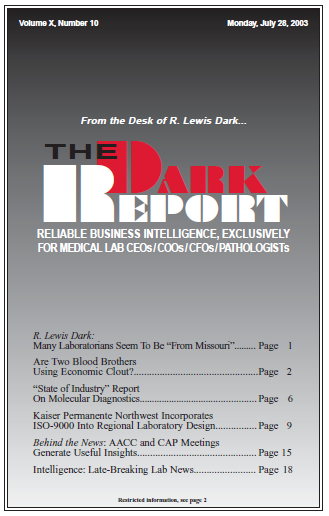IT WAS A BUSY TIME LAST WEEK on the lab industry meeting circuit. THE DARK REPORT made the rounds and uncovered some valuable intelligence for lab directors and pathologists. First on the meeting tour was Philadelphia, site of the American Association of Clinical Chemistry (AACC) annual convention, held July 21-25. The number of exhibitors and the …
AACC and CAP Meetings Generate Useful Insights Read More »
To access this post, you must purchase The Dark Report.


